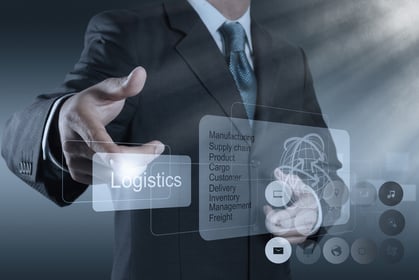5 Tips for Smarter Procurement in the Supply Chain
Jesse Kelber - August 11, 2020

 Have you ever gone shopping with lists supplied by multiple family members? You get to the store, pull out the first list and make your way around the store, grabbing items from each section as you go. Then you pull out list two, and do the same. But then you get to the third list and realize you forgot something from list one, so you backtrack all the way to produce to grab that and when you get back to your current list, you find you’ve lost your place and have to start all over. Then when you finally return home triumphant, it’s only to discover you missed 2 things on one list and 3 on another.
Have you ever gone shopping with lists supplied by multiple family members? You get to the store, pull out the first list and make your way around the store, grabbing items from each section as you go. Then you pull out list two, and do the same. But then you get to the third list and realize you forgot something from list one, so you backtrack all the way to produce to grab that and when you get back to your current list, you find you’ve lost your place and have to start all over. Then when you finally return home triumphant, it’s only to discover you missed 2 things on one list and 3 on another.
Despite the scale being quite different, this is what the procurement process looks like at many companies. This, despite the fact that the digital transformation has made it possible to break out of these old habits and haphazard workflows and work toward procurement processes that are smart and efficient. But what does smart procurement look like in practice? And more importantly, how do you take the process from the situation described above and turn it into the streamlined, smart set of processes you know it can be? Well, a good place to start is right here, with our list of 5 things you can do to smarten up your procurement process.
1) Use Smart Technology, In Smart Ways
Right now, artificial intelligence (AI) is leading the emerging technology being implemented to help with supply chain accuracy, efficiency, and speed. AI is a branch of computer science concerned with creating computer programs that learn to think and act in decidedly human ways. When it comes to using this technology in the supply chain, the first area being tackled is demand planning.
With its heavy reliance on historical patterns and the vast array of datasets available to use as learning tools, demand planning is the logical starting point for the use of AI. The connection to procurement here is simple, without demand planning, your buyer has nothing to go on and no way of knowing how much of what is needed. With the increased accuracy of an AI-generated (and human-verified) forecast in hand, your procurement process can be handled effectively even if your buyer is not as familiar with production as you might like.
2) Automate Where You Can
The reality of AI is that while it is cutting edge, it’s also still an emerging technology rendering it out of reach for many organizations today. While the technology matures and more effective solutions for implementing it in the supply chain are developed, there’s nothing stopping you from doing what you can to get ready. And that means automating as many of your supply chain processes as possible.
To pave the way for AI, make use of commonly available tech like robotic process automation (RPA) bots and software that uses APIs (application programming interfaces) to integrate and automate various stages in your supply chain. With these solutions, you can have your inventory system updated automatically when a shipment arrives, for example. Or you can have your upstream partner’s data feed into your ERP automatically.
In terms of the procurement process, these solutions can be configured to send purchase orders as soon as the supply of a particular raw material drops below a pre-set level, as determined by data coming in from your IoT sensors in the warehouse. Or, you can have a purchase order pre-populated with all the relevant information sent to the buyer with pre-approval attached to streamline what can be a rocky step in the process.
3) Integrate Procurement into Your Supply Chain Process
One of the stumbling blocks many organizations encounter with purchasing is that it often gets treated like a sidenote or an afterthought. And considering the crucial nature of this step in the value chain—after all, you can’t manufacture finished products without raw materials, this seems like a major oversight.
The disconnect caused by purchasing being handled by someone outside of the supply chain itself can amplify these issues. On the other hand, if you can bring procurement into the fold, so to speak, you can quickly eliminate this disconnect and remedy the problems it creates. If your ERP doesn’t have a procurement module, look for a way to use the automation tools mentioned above to connect the tools you do have.
Alternatively, if you can’t manage the technological aspect of this integration, do what you can to bring supply chain procurement under the same management structure as the chain itself. When buying is done by someone in finance, for example, they are likely also buying for other departments and are not familiar with your particular situation or needs. Of course, ideally, you’ll be able to do both forms of integration and reap the immediate benefits they each bring.
4) Follow Industry 4.0 Best Practices
Industry 4.0 is here (or depending on your segment, it may be right around the corner), so it would behoove you to be ready. The 4th Industrial Revolution hinges on the digital transformation and relies on a set of best practices that can be put in place no matter your precise place on the transformation timeline. The place to start when it comes to your procurement process is to increase visibility into the process itself by eliminating shadow IT.
End-to-end supply chain visibility is a topic that we’ve covered before and will continue to cover as it’s crucial for a smoothly functioning supply chain. Shadow IT threatens to derail all of the other great work you’ve done to increase that visibility and update and modernize your value chain. In case you’re not familiar with the term, shadow IT refers to any IT-related asset at a company, be it software, hardware, or infrastructure, that is unknown to the IT department.
If your buying is done by someone in finance, to continue with our example from earlier, and they use software that IT knows nothing about, then there’s no way to integrate it and even less of a chance of gaining visibility into the process as a whole.
5) You Have Data, Use It
Chances are you’ve already implemented some amount of Industry 4.0 technology somewhere up or down your supply chain. Whether it’s IoT sensors on the production line, smart pallets in shipping, or GPS tracking in the warehouse—this technology creates a lot of data. Now you just have to use it.
Advanced analytics are the key here, as the insights are generated in real-time and are immediately actionable. So using the historical data provided by your demand planning, combined with the sensor data coming in from the line and warehouse, your procurement process will be better informed than ever before. And when you include some level of automation, you won’t even have to hit send on the purchase order to have it speeding toward you in no time at all.
LATEST POSTS
- Understand Circular Economy in The Manufacturing Industry
- How Can Industry 4.0 IT Integration Be Achieved Smoothly?
- The Significance of Order Sequencing in Discrete Manufacturing
- How to improve your Supply Chain Management: The Power of Control Towers
- Optimizing Human Resource Scheduling in Manufacturing: A Technological Approach



